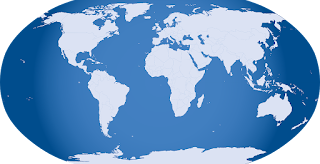 |
| This is where your customers are now. |
It's no secret to
you, Engineer, that the world is densely populated with standards and
approvals. No matter where you live or work, the process equipment designs that
flow from your workstation, your team, your company, are more likely than ever
to end up on foreign shores.
Solenoid operated valves are ubiquitous, even a little mundane in their apparent simplicity,
but still require expertise for proper specification and application. The
jurisdictional requirements for a valve assembly applied in the same manner can
vary from one country to another. This can be especially important when
designing equipment or processes that may be installed in different parts of
the world, such as United States and European Union production plants of a
single company.
Fortunately, many
manufacturers now provide valves with multiple approvals from around the world
to facilitate the use of a single component across a wide geographic and
jurisdictional range. Even with this accommodation, it is still the specifying
engineer’s responsibility to select the correct valve, not only for the
application, but for a regulatory environment that is populated with standards
and approvals that can be difficult to coordinate with confidence. One
prominent valve manufacturer has authored a white paper that provides some
insight into navigating this challenge, outlining an array of international
approval agencies and providing a clear explanation of how T-codes (temperature
codes) vary between US and EU agencies. The white paper is available on request and is a must-read for any
engineer specifying or servicing solenoid valves.
